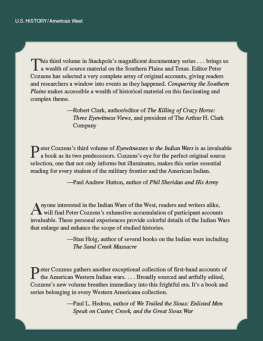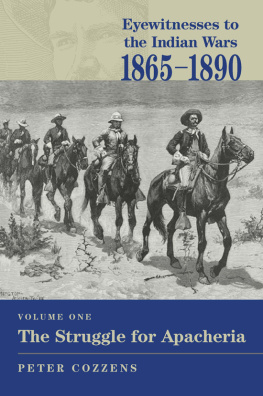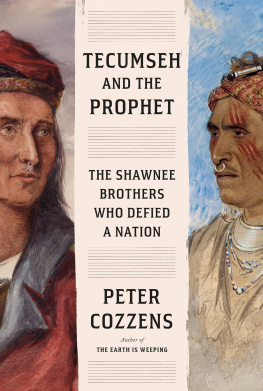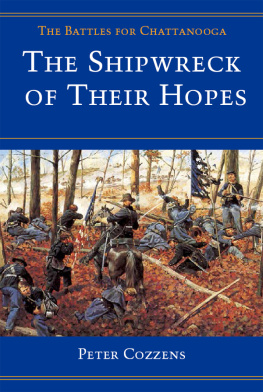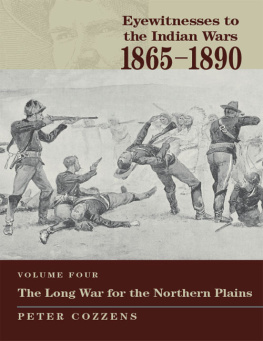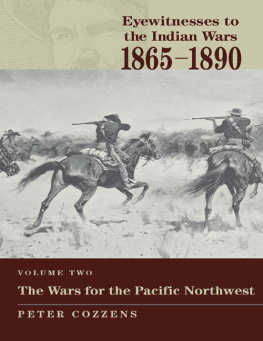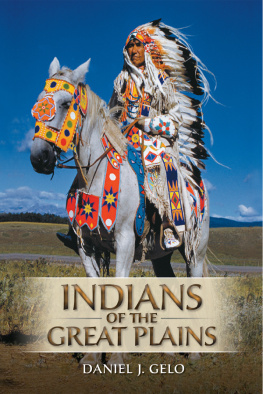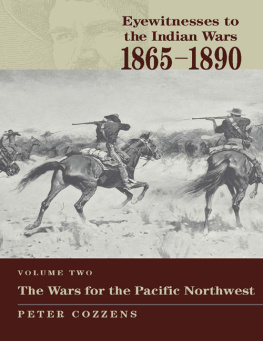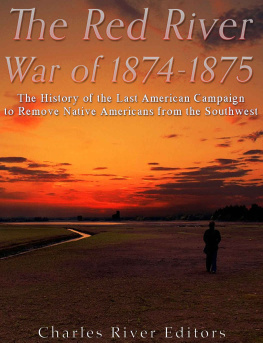EYEWITNESSES TO THE INDIAN WARS, 18651890
ALSO BY PETER COZZENS
No Better Place to Die: The Battle of Stones River
This Terrible Sound: The Battle of Chickamauga
The Shipwreck of Their Hopes: The Battles for Chattanooga
The Darkest Days of the War: The Battles of Iuka and Corinth
The Military Memoirs of General John Pope
General John Pope: A Life for the Nation
Eye witnesses to the Indian Wars, 18651890: Vol. 1, The Struggle for Apacheria
Battles and Leaders of the Civil War, Vol. 5
Eye witnesses to the Indian Wars, 18651890: Vol. 2, The Wars for the Pacific Northwest
EYEWITNESSES TO THE INDIAN WARS, 18651890
Conquering the Southern Plains
EDITED BY PETER COZZENS
STACKPOLE
BOOKS
Copyright 2003 by Stackpole Books
Published by
STACKPOLE BOOKS
5067 Ritter Road
Mechanicsburg, PA 17055
www.stackpolebooks.com
All rights reserved, including the right to reproduce this book or portions thereof in any form or by any means, electronic or mechanical, including photocopying, recording, or by any information storage and retrieval system, without permission in writing from the publisher. All inquiries should be addressed to Stackpole Books, 5067 Ritter Road, Mechanicsburg, Pennsylvania 17055.
Printed in the United States of America
10 9 8 7 6 5 4 3 2 1
FIRST EDITION
Library of Congress Cataloging-in-Publication Data
Eyewitnesses to the Indian Wars, 18651890 / edited by Peter Cozzens.1st ed.
p. cm.
Includes index.
Contents: v. 3. Conquering the Southern Plains
ISBN: 0-8117-0019-4
I. Cozzens, Peter, 1957
E99.A6 E94 2003
973.8dc21
00-52270
eBook ISBN: 978-0-8117-4932-9
For Ismael Alexander
ILLUSTRATIONS AND MAPS
Maps
PREFACE
Eyewitnesses to the Indian Wars, 18651890: Conquering the Southern Plains is the third volume in a planned five-volume series that will tell the saga of the military struggle for the American West in the words of the soldiers, noncombatants, and Native Americans who shaped it. Volume Four will be devoted to the conflicts on the Northern Plains. Volume Five will include accounts of a general nature. Among the topics that narratives in the fifth volume will address are the Indian-fighting army, the army and Indian policy, prominent chiefs and warriors, prominent officers and their campaigns, officers and enlisted men, scouts and Indian auxiliaries, army wives, and forts and camps.
It is the intent of the present volume to offer as complete a selection of outstanding original accounts pertaining to the struggle for the Southern Plains and Texas as may be gathered under one cover. The Ute War of 1879 is also covered in this volume. Most of the accounts presented here are drawn from contemporaneous newspapers and magazinesa wealth of primary source material, much of which has remained unknown not only to the general reader, but also to serious students and historians of the Indian Wars.
For the benefit of readers new to the series, I will review the considerations that have guided my choice of material for inclusion in Eyewitnesses to the Indian Wars. First, the events described must have occurred between the end of the Civil War and the tragedy at Wounded Knee. Most of the articles in the series were first published during the authors lifetimes, and none published within the last fifty years have been included, as they are for the most part readily available. I also have excluded accounts that later appeared in book form, as well as those of dubious reliability.
Manuscript sources account for a small but significant portion of the contents of the series. A third source of material is military reports, both official and unofficial, which, at the time they were penned, were considered sufficiently important that their authors or the War Department had them published outside of normal channels.
In the accounts presented in this volume, there is an unfortunate but unavoidable imbalance between white and Native American sources. The extant accounts of Southern Plains Indian participants consist largely of oral testimony and have formed the basis of several fine books. Col. Wilbur S. Nye interviewed Kiowa tribal elders in the early twentieth century and drew on similar interviews that Capt. Hugh Scott had conducted in the 1890s to produce Bad Medicine and Good: Tales of the Kiowas (Norman: University of Oklahoma Press, 1962). The forty-four stories collected in Bad Medicine and Good trace Kiowa tribal history from the 1700s to the New Deal of the 1930s. There are chapters on the organization and conduct of raiding parties, the martial deeds of war chiefs, and the treatment of white captives. Colonel Nye also authored two highly regarded works on the Southern Plains Indian Wars that drew on the testimony of Native American participants: Carbine and Lance: The Story of Old Fort Sill (Norman: University of Oklahoma Press, 1943) and Plains Indian Raiders: The Final Phases of Warfare from the Arkansas to the Red River (Norman: University of Oklahoma Press, 1968).
The Cheyenne story of the Southern Plains Wars is brilliantly told in George B. Grinnell's The Fighting Cheyennes (New York: Charles Scribner's Sons, 1915), a classic of western Americana. Grinnell (18491938) was a naturalist and ethnologist who knew the Cheyennes well. A long association with the Cheyennes has given me a special interest in them, and a special wish that they should be allowed to speak for themselves, said Grinnell in the preface to The Fighting Cheyennes. What the Indians saw in the battles here described, I have learned during years of intimate acquaintance with those who took part in them. Grinnell allowed the Cheyennes to speak without inserting critical comment of his own.
Charles J. Brill also used the testimony of Cheyenne participants in writing his Conquest of the Southern Plains: Uncensored Narrative of the Battle of the Washita and Custer's Southern Campaign (Oklahoma City: Golden Saga Publishers, 1938). Unfortunately, Brill's extreme hostility toward the army in general and to Custer in particular often obscures the valuable Cheyenne accounts that are interwoven with Brill's narrative.
A few words about editorial practice in Eyewitnesses to the Indian Wars are in order. My goal has been to present accurate and annotated texts of the articles, letters, reminiscences, and reports included in the series. I have added notes to correct errors of fact, clarify obscure references, and provide historical context where needed. Editing of the text has been light. Most nineteenth-century writers had a penchant for commas. I have eliminated them where their overuse clouded the meaning or impeded the rhythm of a sentence. I have regularized capitalization, punctuation, and the spelling of names and places. I also have standardized references to the ranks of army officers, using their Regular army rank at the time of the events described. Apart from these small changes, I have left the writings as I found them.
ACKNOWLEDGMENTS
Continued diplomatic service abroad with the Department of State made it particularly challenging for me to gather the articles and other primary accounts presented in this volume. Without the persons mentioned below, whose help I am pleased to acknowledge, it would have been impossible.
First, I thank my mother for her many trips to the Wheaton Public Library, submitting interlibrary loan requests and retrieving articles; my sincere thanks go also to the staff of the periodicals department of the Wheaton Public Library for their patience and diligence in filling these requests.

